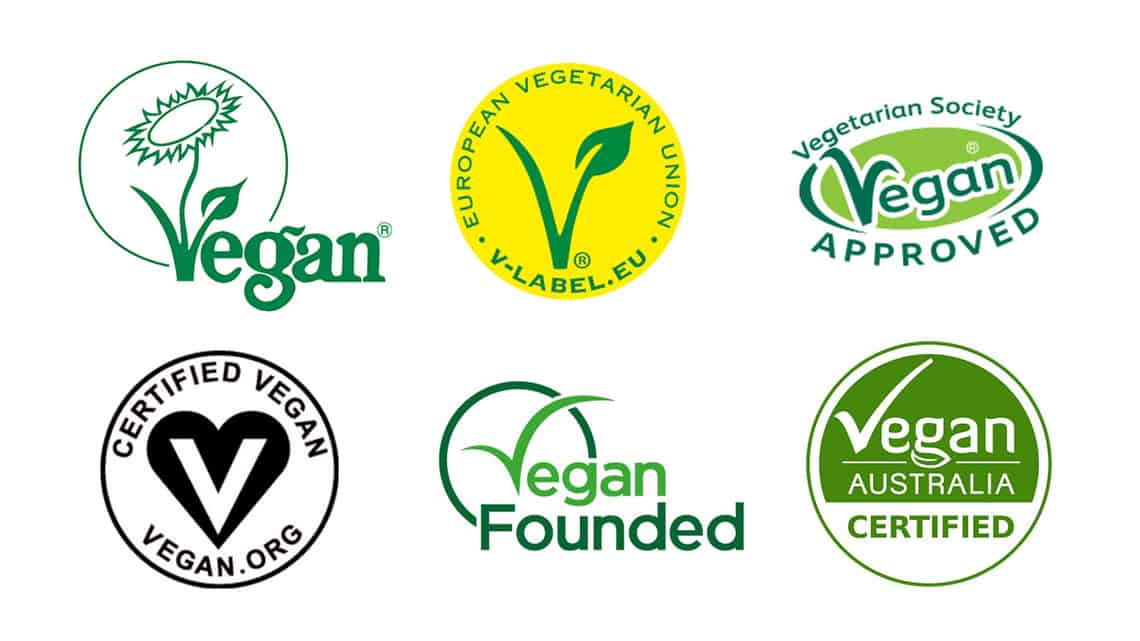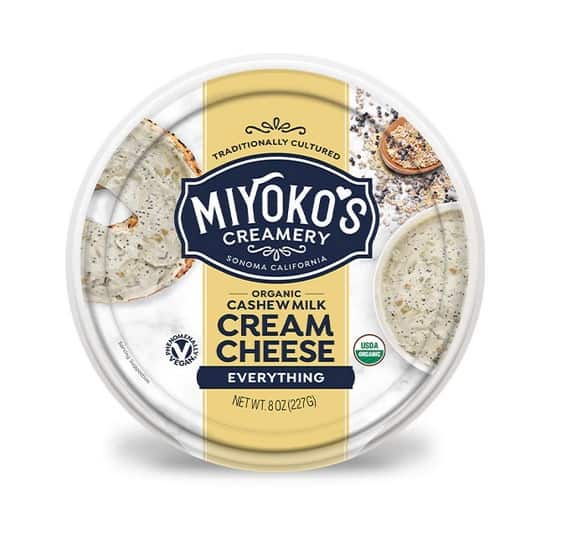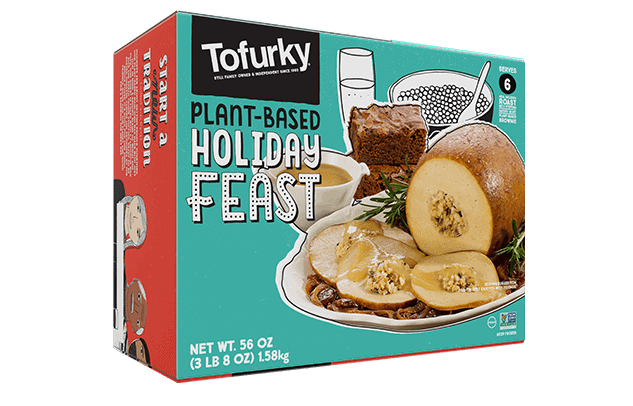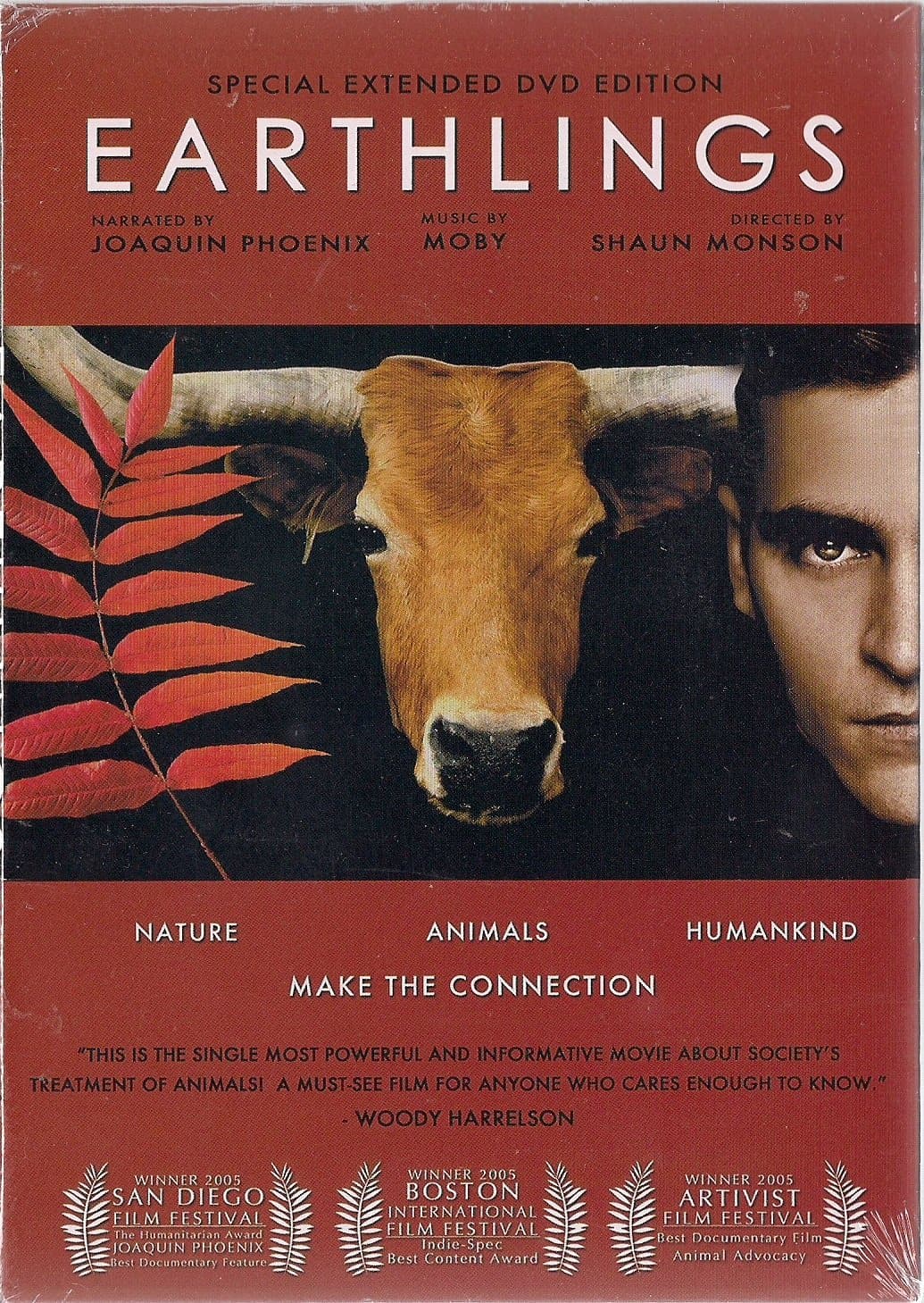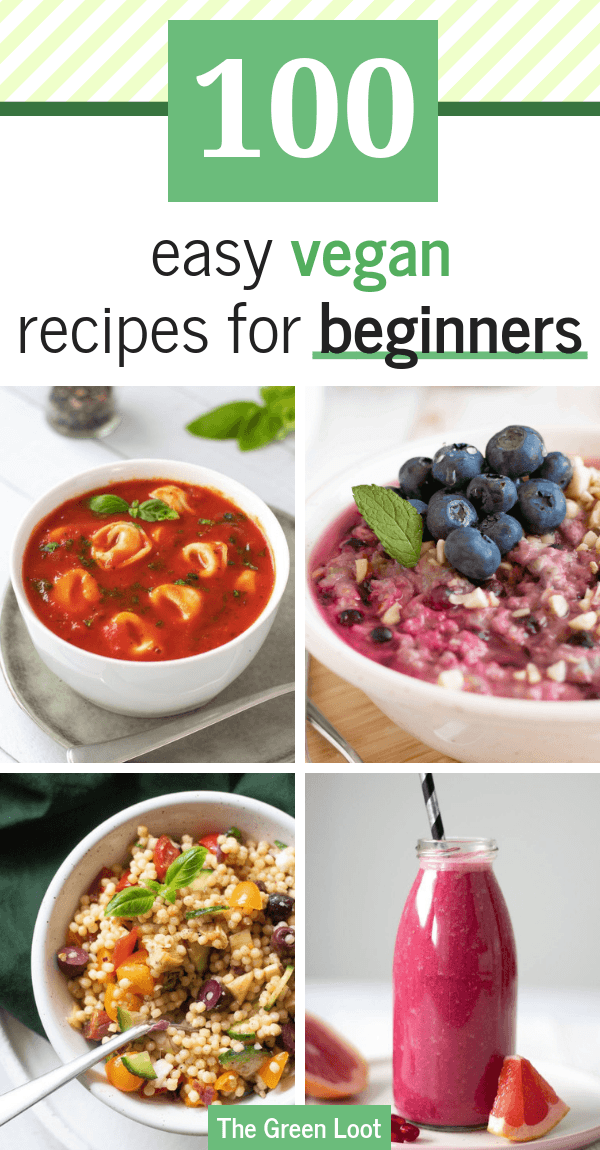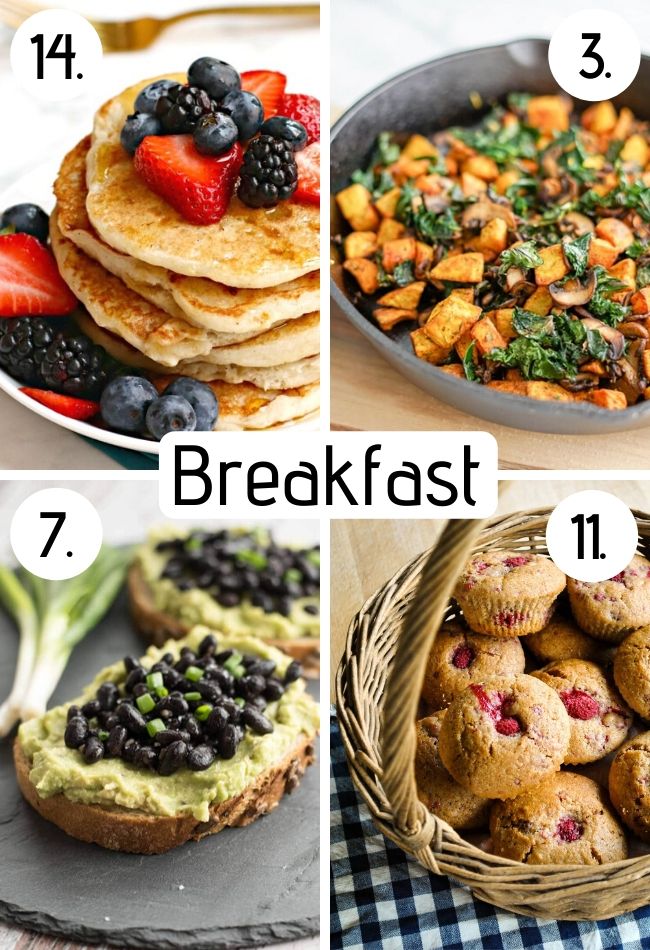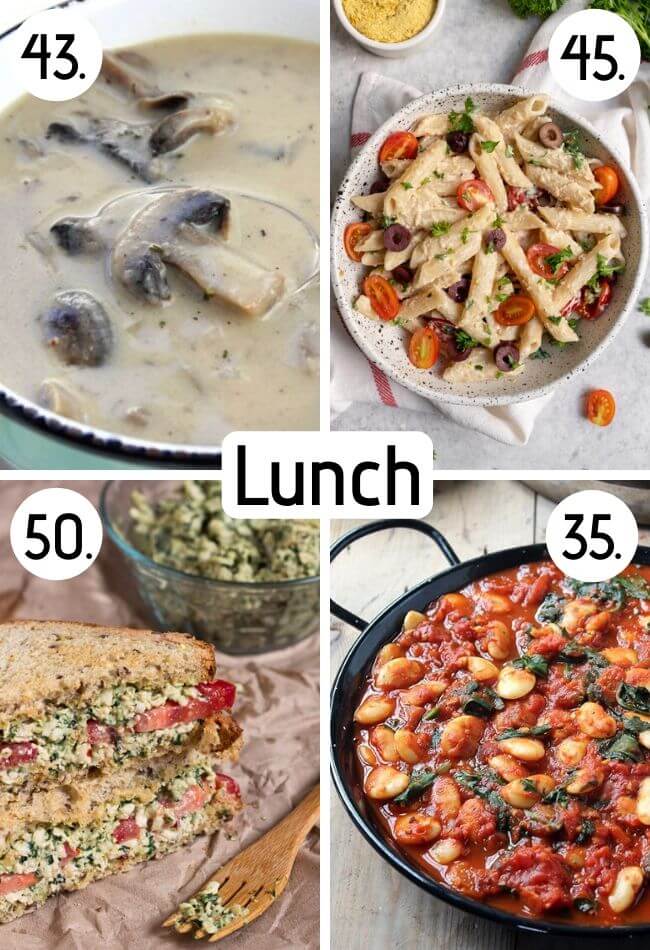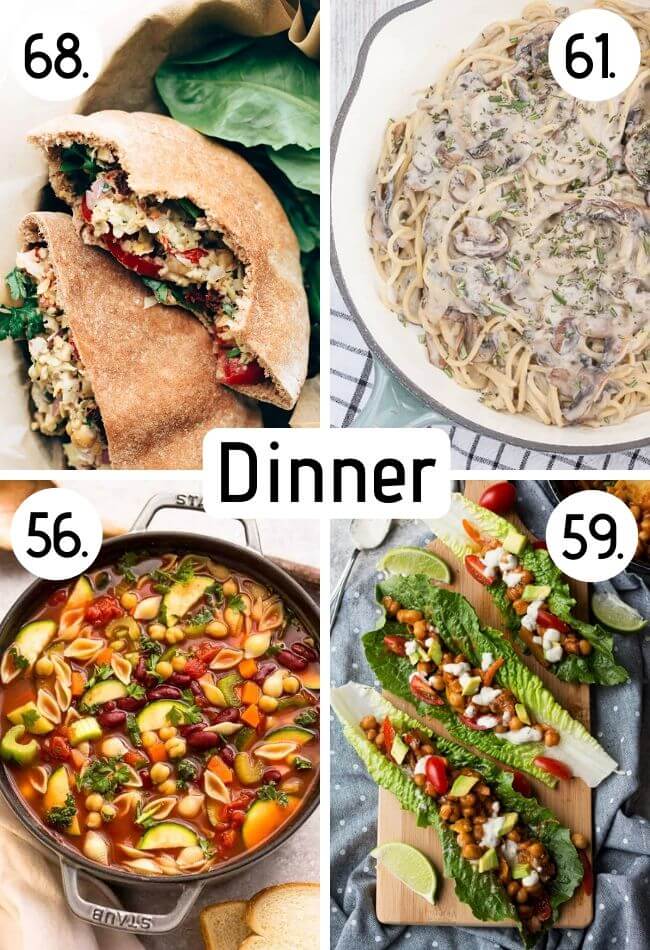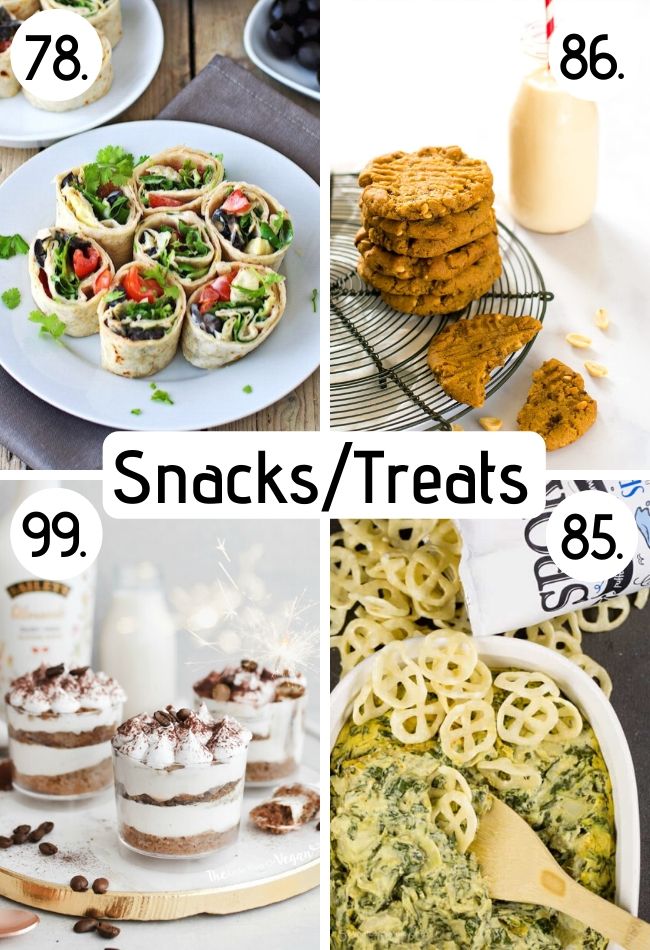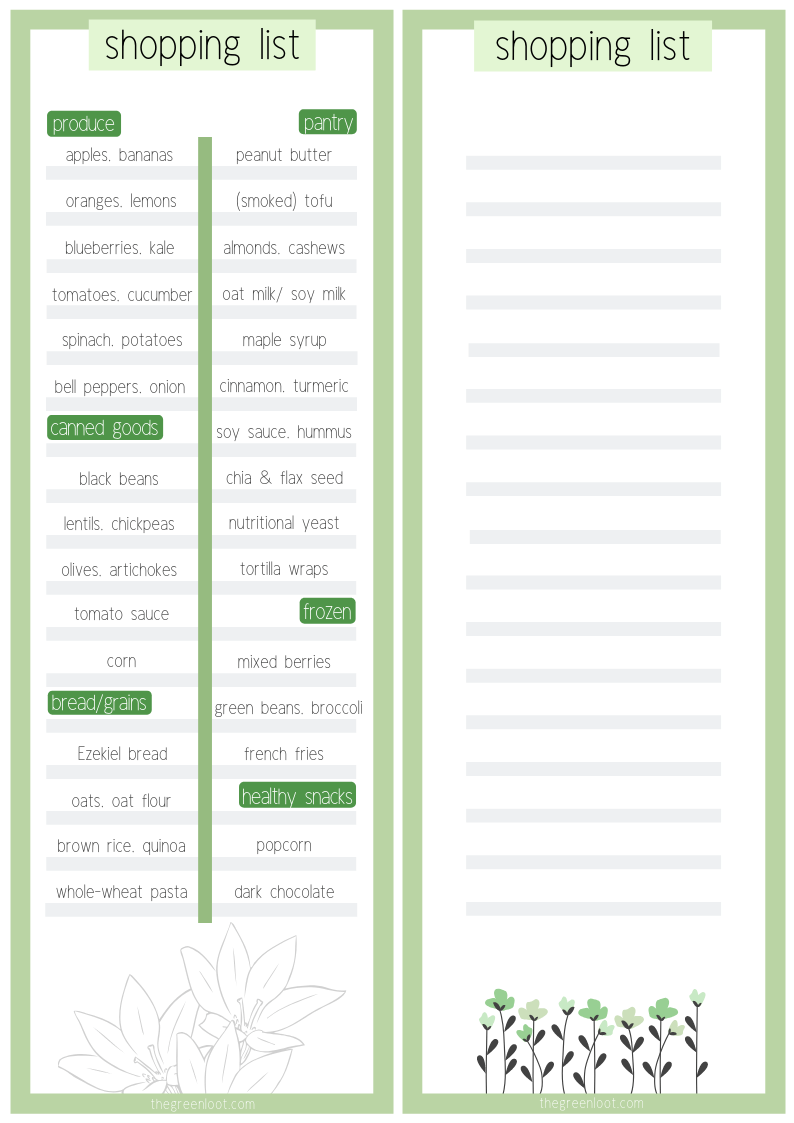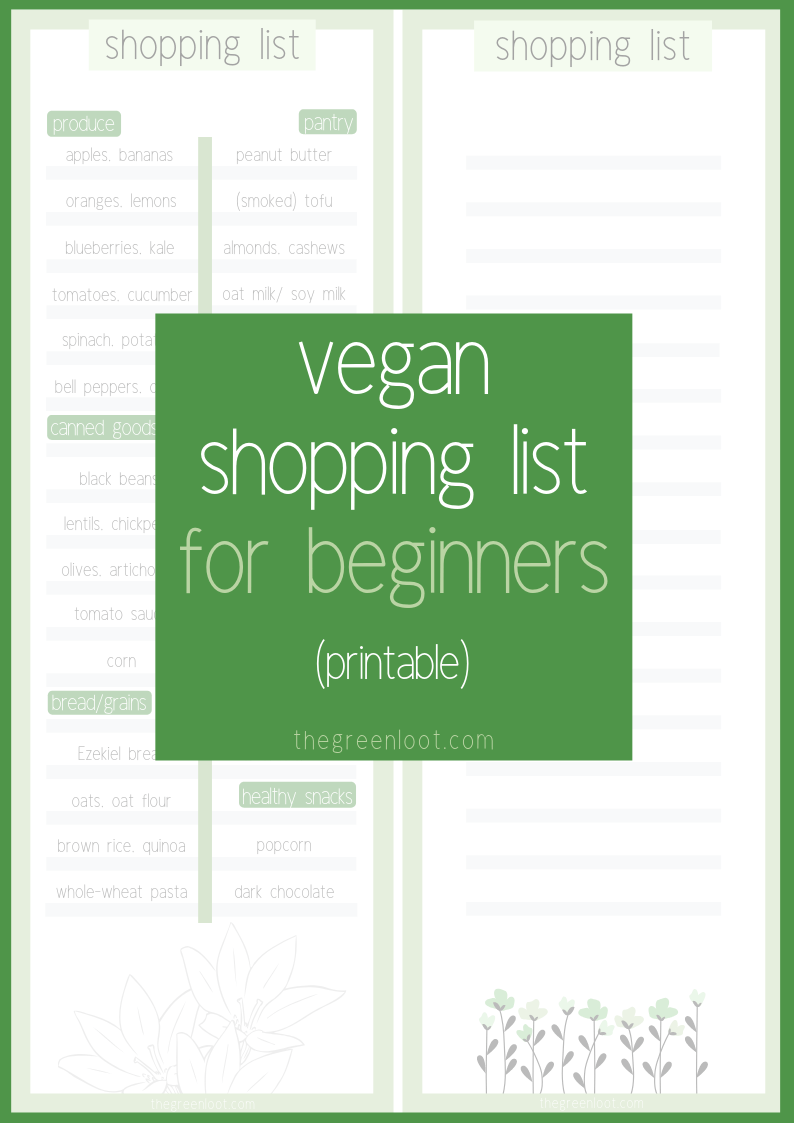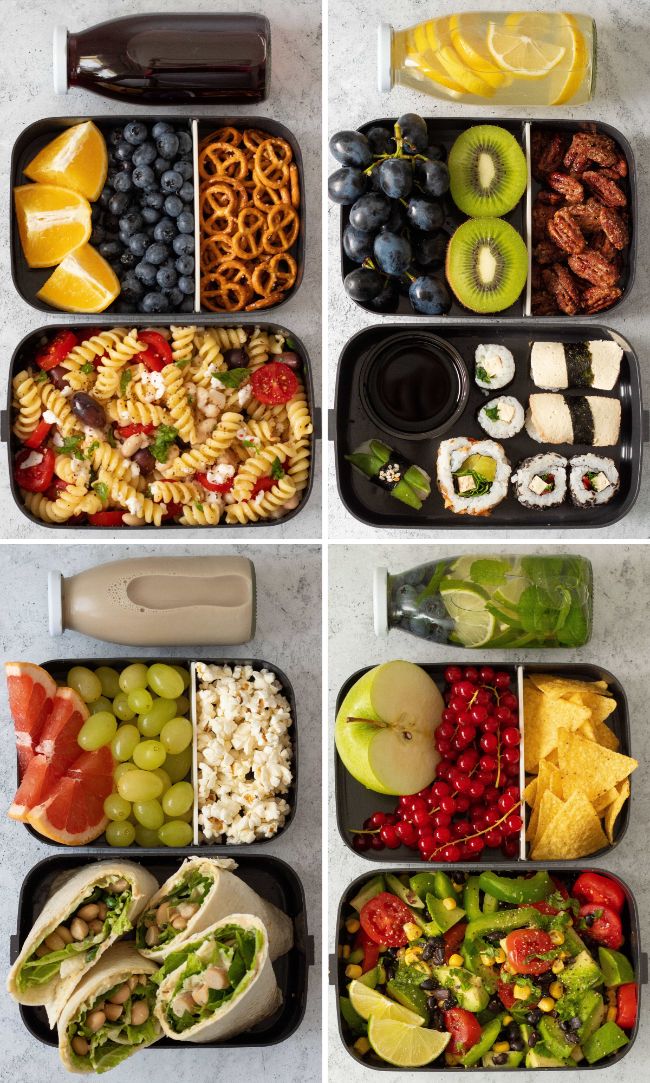Going Vegan for Beginners: Ultimate 2024 Guide
So, you have made the big decision to go vegan in 2024. Congratulations! You have made the best choice for your health, the Earth and all animals that live on it!
To make the transition easier, I made this handy guide for you.
Going Vegan for Beginners: 2024 Guide
After being fully vegan for a long time (almost 9 years), I think I can confidently say that I have gained a LOT of experience. And I want to share that experience with you, so your transition period will be fun and smooth!
Feel free to bookmark this article, so you can always come back to it, if you have any questions!
You can also e-mail me at [email protected] or leave a comment below! I’d be more, than happy to answer your questions. 🙂
1) What EXACTLY can and can’t I eat on a vegan diet?
Here’s a detailed guide on what you can eat on a vegan diet.
And here’s the gist of it:
Vegans can eat:
Anything made from plants or anything that doesn’t contain any animal derived ingredients: fruits, vegetables, grains, legumes, tofu (check out my favorite tofu recipes), nuts and seeds, spices and herbs, vegan beverages, vegan junk food (frozen pizza, ice cream…etc.), vegan cheese…etc.
Vegans can’t eat:
Anything derived from an animal: meat, fish, dairy, eggs, honey, etc.
ALWAYS check the “Ingredients” list of a product before you purchase it.
The best is if you buy something that has the official vegan logo on it.
2) Vegan vs. Plant-based
It’s important to point out that there is a difference between the vegan and the plant-based diet. While both of them exclude animal-derived ingredients, the plant-based diet is stricter in terms of what you can eat.
The plant-based diet is exactly what it sounds. A diet consisting of PLANTS. No processed food! No white flour, white sugar, frozen pizza, ice cream, soft drinks, alcohol, etc. What you can eat is what you can find in nature. Although, cooking and baking is fine.
3) Vegan Substitutions for Meat, Fish, Dairy, Eggs and Honey
When you go vegan, you obviously will have to give up some of your favorite foods. The hardest part for me was eggs.
It might be meat or fish for you. But don’t worry, even for a second!
There are some unbelievably good vegan substitutes for every animal derived food ingredients! You will be shocked at how good some of them are.
Here are a few examples:
Instead of meat, try: tofu, tempeh, seitan, “meat loafs” from beans and lentils.
Instead of fish, try: avocado sushi, carrot salmon, artichoke crab cakes, algae soup.
Instead of dairy, try: oat milk, nut milks, cashew cheese, nutritional yeast (tastes/looks like Parmesan), coconut whipped cream, olive oil.
Instead of eggs, try: flax egg, scrambled tofu, chickpea flour scrambled eggs, bananas.
Instead of honey, try: maple syrup, agave syrup, date syrup.
Where’s the best place to buy vegan ingredients?
Online vegan food stores, health food stores, bulk shops and farmer’s markets, Trader Joe’s (Aldi), Whole Foods.
Vegan Online Food Stores
Worldwide:
USA:
Vegan Cuts (limited worldwide shipping)
Europe:
UK:
Switzerland and Liechtenstein
Canada:
Australia:
South Africa:
Vegan alcohol
This might surprise you, but a lot of alcohol drinks are not vegan.
The best place to check which ones are safe is Barnivore.
It’s a great website with a database of over 40,000 entries.
4) 5 Tips for an Easier Transition
1. Take your time.
To most people, giving up meat, dairy and eggs is not easy. So go easy on yourself! Start by putting plant milk in your morning coffee instead of cow’s milk, then change to vegan cheese, then put black bean patties in your hamburger instead of meat. Taking baby steps might seem slow for you, but it’s a method that works best for the most people. You can find plenty of vegan cheese, “fake meat” and vegan egg brands on the market.
These products are tasty and can be super helpful while transitioning:
Vegan Cheese Brands:
Vegan “Fake Meat” Brands:
Vegan Egg Brands
2. Don’t beat yourself up if you slip!
Be kind to yourself. Being vegan is not a competition. It’s not like you’re disqualified if you accidentally eat cheese, or accept your grandma’s butter cookies at Christmas. We all grow up eating meat and dairy, so it takes time to learn how to eliminate them from our diets. It’s perfectly fine if you have a few moments in your life when you eat non-vegan food. Forcing and starving yourself, will only result in binge eating 3 pepperoni pizzas at 10 PM. And you will feel super guilty after that.
You can do this, I believe in you.
3. Watch vegan documentaries…
… to remind yourself why you’re doing it. If you want to go vegan for…
4. Make sure to always eat filling and flavorful food.
If your belly is full, you will say ‘no’ easier to temptations, like a cheeseburger or buttermilk cupcakes. Veggies can be bland, so make sure your meals are flavorful, as spices and herbs can help satisfy cravings. Eat a lot of food with super healthy and filling ingredients like oats and beans/lentils.
5. Prepare in advance for social events.
Social events can be tricky for a vegan, but there are a few ways you can make sure that you will have a great time. Always talk to your friends and family members beforehand. If your group will meet in a bar or restaurant, go to a place where there are vegan options. If the event is at someone’s house, take your favorite vegan party food with you and share with the guests. If you know that there won’t be any opportunities for you to eat/drink vegan, eat a big amount before the event or hide some snacks in your bag!
If you want to avoid annoying relatives and friends nagging you about what you eat, just tell them that you are detoxing for a few days. 😉
5) Going Vegan with Kids
1. Make their food look “cute”. You can get creative with this! A slice of bread can be cut into a shape of a cat or a bunny! Or you can make an apple slice star-shaped. Food CAN be fun! (Also, it’s a scientific fact, that children will much more likely eat something that’s cut into tiny pieces.)
2. Even if your small ones are picky eaters, always offer a serving of fruit for breakfast, and a serving of veggies for lunch&dinner. You can normalize the presence of healthy, plant-based food by always having it on the table. They will get used to it quickly, that way.
3. Hide the veggies! 😉 Make carrot muffins, berry smoothies with spinach, brownies with zucchini and so on.
4. Make/buy plant-based snacks. Instead of chips and chocolate bars, offer your kids salted almonds or healthy energy bites.
5. Always pack them lunch! School cafeterias usually offer food that is not only not vegan, but super unhealthy too. On the other hand, if YOU pack their lunch, you can fully control what they eat and how healthy it is.
6. Talk often to your kids about how big and strong they will be if they eat veggies and beans! Show them the Popeye cartoon! (He is a sailor who grows huge biceps after eating a can of spinach. 🙂 )
7. Get them to help you in the kitchen! If they are used to making their own meals since childhood, they will develop a healthy relationship with food that will really show when they are older.
8. Avoid zoos, but do take your kids to sanctuaries that have farm animals. Show them how smart, beautiful and gentle these creatures really are. If they see that they can play with cows, goats and even chickens, they will develop a kind attitude towards them. This will result in a natural interest in the vegan lifestyle later on.
9. Adopt a pet, if you have the means. Taking care of an animal is not only therapeutic, but it also teaches children to respect all living creatures.
A list of fun vegan recipes for kids:
Rainbow Vegetable Tortilla Wrap
Peanut Butter Oatmeal Energy Bites
Carob Chia Seed Pudding for Toddlers
6) Vegan Protein
You might be wondering… where do vegans get their protein if there is no meat, fish or eggs in their diet?
The answer to that question is: everywhere! There is protein in everything.
Yes, even in blueberries. It might be a tiny amount, but it’s there.
Of course, when we talk plant protein, the best sources are beans, lentils, tofu (made from soy beans), oats, quinoa and nut butters.
Here is my detailed guide on Vegan Protein Sources.
7) Vegan/plant-based food blogs you should read/follow
Melissa @ Vegan Huggs
Ania @ Lazy Cat Kitchen
Bianca @ Elephantastic Vegan
Susan @ FatFree Vegan Kitchen
Sam @ It Doesn’t Taste Like Chicken
Sina @ Vegan Heaven
Lauren @ Lauren Caris Cooks
Mary Ellen @ V Nutrition and Wellness
Brittany @ I Love Vegan
Gwen @ Delightful Adventures
Deryn @ Running On Real Food
Kate @ The Veg Space
Jamie @ Baking You Happier
Candice @ The Edgy Veg
Mel @ A Virtual Vegan
Sarah @ My Darling Vegan
Emilie @ Emilie Eats
Kristina @ Spabettie
Alexa @ Fooduzzi
Marina @ Yummy Mummy Kitchen
Jenn @ Veggie Inspired
Sarah @ Fried Dandelions
Margaret @ The Plant Philosophy
Jasmine & Chris @ Sweet Simple Vegan
Ginny @ Vegan In The Freezer
Amy @ Veggies Save The Day
Michelle @ Healthier Steps
Marlena @ Where You Get Your Protein
Elena @ Happy Kitchen Rocks
Omar @ Lands & Flavors
Jackie @ Vegan Yack Attack
Shane @ Shane & Simple
8) 100 easy vegan recipes for beginners
Breakfast
1. Peanut Butter Oatmeal Breakfast Bars
2. Pumpkin Spice Latte Chia Pudding
3. Potato, Mushroom and Kale Hash Skillet
4. Strawberry Sweet Roll Mug Cake
6. Easy Peanut Butter Banana Muffins
7. Black Beans & Avocado Toast
9. Coffee Cake with Apple Cinnamon Streusel
13. Chocolate Cherry Smoothie Bowl
15. Banana Nut Bread
16. Blueberry Baked Oatmeal Mug Cake
17. Peanut Butter Chia Overnight Oats
18. Microwave Buckwheat Mug Cake
22. Jam & Almond Butter Muffins
23. Banana Steel Cut Oats (Instant Pot or Stove Top)
24. Slow Cooker Apple Cinnamon Oatmeal
Lunch
27. Green Pesto Vegetable Soup
30. Skinny Cream of Mushroom Pasta
32. Mediterranean Buddha Bowl with Falafels
33. Creamy Tomato Spinach Pasta
34. Tofu “Tuna” Salad Sandwiches
35. Spanish Beans with Tomatoes
36. Italian Lemon Rosemary Barley Soup
37. One Pot Basil and Tomato Orzo
38. Roasted Tomato Chickpea Soup
39. Spinach and Sun-Dried Tomato Pasta Salad
41. Avocado Pasta
45. Hummus Pasta
49. Black Bean Soup
Dinner
52. Crispy Chickpea Tacos (Air Fryer)
53. Chipotle Pumpkin Veggie Burgers
54. Spanish Beans with Tomatoes
55. Oven Baked Garlic Mushroom Rice
57. Roasted Sweet Potato Tacos
59. BBQ Chickpea Lettuce Wraps
60. Bean and Cauliflower Rice Enchiladas
61. One Pot Creamy Mushroom Pasta
64. Lentil Stew
65. Slow Cooker Sweet BBQ “Meatballs”
68. Mediterranean Un-Tuna Salad
72. Fresh Spring Rolls with Peanut Sauce
74. BBQ Lentil Tacos
75. Instant Pot Vegetable Soup
+1: Italian Pearl Couscous Salad
Snacks/ Desserts
77. No Bake Peanut Butter Brownie Bites
79. Creamy Chocolate Ice Cream
80. No-bake Strawberry Coconut Cream Pie
81. Carrot Cake Truffles with Vanilla Icing
83. Skillet Strawberry S’mores
84. No-Bake Chocolate Cheesecake
85. Spinach and Artichoke Dips
87. Baked Chocolate Donuts (gluten-free)
88. No-Bake Stracciatella Cream Pie
89. Nutella Coconut Hazelnut Chocolate Mousse
91. Apple Meringue
93. Mint Chocolate Chip Ice Cream
94. 1-minute Cinnamon Roll in a Mug
95. No-Bake Key Lime Avocado Pie
96. Awesome Chocolate Chip Cookies
98. Pretzel Bites with Spicy Maple Mustard Dip
99. Easy Tiramisu
100. Chocolate Covered Snickers Stuffed Dates
9) Vegan Holidays
Just like any everyday meal, holiday recipes can be veganized too! Here are a few roundup posts of amazing vegan recipes for each holiday in the year:
10) Healthy 7-day Meal Plan
It can be overwhelming to figure out what to eat on each day of the week when you are just starting out with this lifestyle.
So, I made a 7-day sample meal plan for you to make your life easier.
Taking your lunch with you from home is also a great way to protect your wallet from ordering food too many times.
Just click on the name to go to the recipes!
Day 1:
Day 2:
Day 3:
Day 4:
Day 5:
Day 6:
Day 7:
11) Shopping List
You would be surprised how much “on purpose” and “accidentally” vegan food can be found in general supermarkets. Most of these items can be found anywhere, just keep looking!
Fruits: apples, bananas, oranges, lemons, kiwis, blueberries…etc.
Veggies: kale, spinach, tomatoes, cucumber, potatoes, bell pepper, onion…etc.
Canned goods: tomato sauce, black beans, lentils, chickpeas, olives, artichokes, corn…etc.
Bread/Grains: Ezekiel bread (made from sprouted grains), whole-wheat pasta, oats, oat flour, brown rice, quinoa…etc.
Pantry: peanut butter, (smoked) tofu, nuts (almonds, cashews…etc.), seeds (chia, flax, hemp…etc.), plant milk (oat/soy/rice/almond…etc.), maple/agave/date/rice syrup, soy sauce, teriyaki sauce, hummus, spices and herbs (fresh basil, cinnamon, turmeric…etc.), tortilla wraps, nutritional yeast, black salt (for vegan eggs).
Frozen section: mixed berries (for smoothies), green beans, broccoli, french fries…etc.
Healthy snacks: popcorn, dark chocolate, granola bars…etc.
12) Plant-Based Nutrition and Health
Reading health-related information on the internet can be tricky sometimes. Anyone can write anything, so how do you make sure that what you read is accurate?
By choosing a trustworthy source of course! My recommendation for everything about plant-based nutrition is Dr. Michael Greger‘s non-profit website: NutritionFacts.org.
He also wrote the world-famous How Not To Die book (New York Times bestseller!) and cookbook.
In his book he shows what to eat to help prevent the top 15 causes of death, and introduces the Daily Dozen—a checklist of the foods we should try to consume every day to live as long as possible.
The cookbook contains over 120 super healthy plant-based recipes that are Daily Dozen compliant.
13) Vegan Weight Loss
Even if you don’t intend to lose weight, switching to a vegan diet usually results in shedding a few pounds, since you cut out meat, dairy and a lot of processed junk food.
Of course, being vegan does not automatically equal being healthy. French fries, pizzas, ice cream and other vegan junk food can be very unhealthy and living off of them can result in serious weight gain and other health problems.
If you would like to properly burn unwanted fat and keep it down too, you should follow a plant-based diet. The plant-based diet consists of strictly plants. (Duh.) You can’t wish for a diet healthier and more efficient than that.
A plant-based diet means that if something comes from the ground, you can eat it (veggies, fruits, nuts, seeds, oats…etc.). If something comes from a factory (processed food), you can’t eat it. So, no store-bought ice cream, no frozen pizza, no vegan cheese and no beer. Sorry.
For some inspiration, here are the best vegan weight loss recipes.
14) Vegan Restaurants / Eating Out
If you don’t have time to cook (or you just don’t like cooking) you can always go to a vegan restaurant! Luckily there are more and more of them in every country around the world.
The best source for checking vegan restaurants (with reviews) is Happy Cow.
It’s a fantastic website the lists every vegan and vegetarian restaurant, health store, delivery, farmer’s market, B&B and more.
You just have to enter your zip code and it will show you everything around you on a map. Everything listed has real reviews from actual people so you can check if it’s worth your time or not.
You can even filter the results to get an even more specific list that’s tailored to your needs.
If you’re interested in a Vegan Starbucks guide, I made that too! 🙂
15) Meal Prepping / Work and School Lunches
Sometimes it’s difficult find vegan food deliveries and even if you do, they are quite expensive.
Not to mention, most office’s cafeterias don’t carry any vegan meals other than boring salads. Now if you don’t wanna live off sad pieces of lettuce or completely empty out your wallet, you should really get into meal prepping.
Here are 3 vegan meal prep collections to inspire you:
- High-Protein Lunches for Weight Loss
- No-Heat School Lunches for College
- 500-calorie Lunches
- 40+ Cheap Vegan Meals
16) Essential Supplements for Vegans
It might surprise you, but this list is not very long. You see, by eating healthy plant-based food most of the time, you can get almost every vitamin into your body. Still, there are 2 vitamins you won’t find in any plant.
Vitamin B12 and D3.
B12 supplementation is CRUCIAL for vegans, but unfortunately it’s often overlooked.
Please watch this video below from Dr. Michael Greger on the daily recommended amount of B12.
So, you should take a 250 mcg B12 pill every day. (source)
B12 deficiency can cause serious neurological problems, so definitely get your levels checked and consult your doctor about it.
And even if you live in the sunniest country in the world and you are outside all day, you should still supplement vitamin D3.
17) Must Have Kitchen Appliances and Gadgets for Vegans
There are a few kitchen gadgets that should absolutely have a place in your kitchen. I collected them here.
Not all of them are essential, but they can definitely make your life easier and help you create all kinds of delicious food!
If you have anything to add to this guide or have any question, leave me a comment! I read every comments and reply to everyone.
Have a wonderful vegan journey! ❤
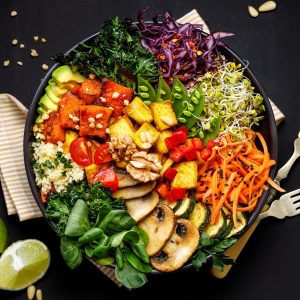

Going Vegan for Beginners: 2024 Guide
In this Going Vegan for Beginners guide, you’ll find a handy summary about the vegan diet and lifestyle. Tips, recipes, shopping list…


